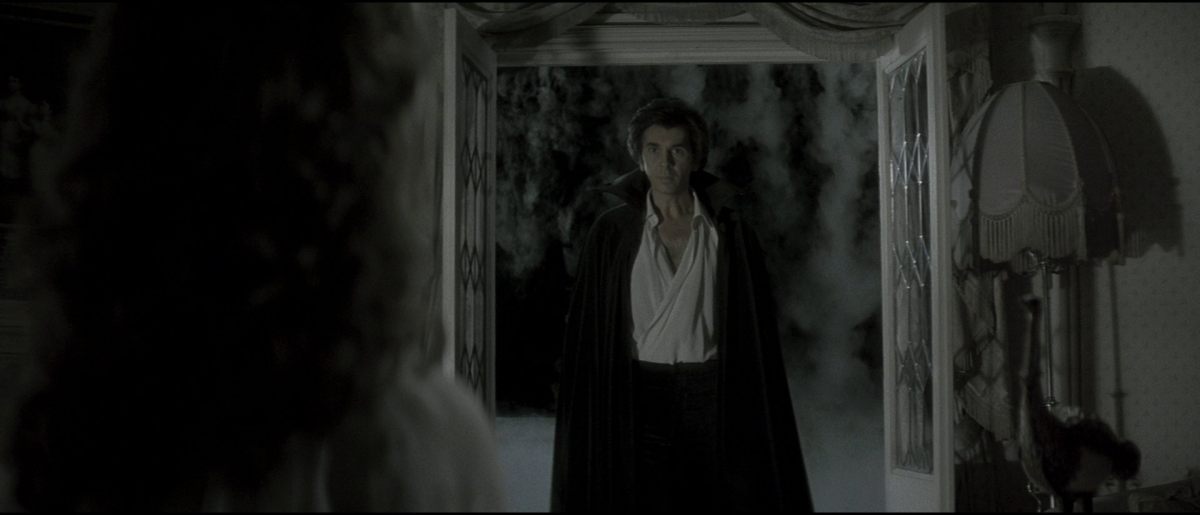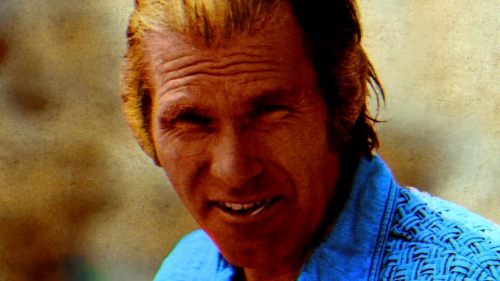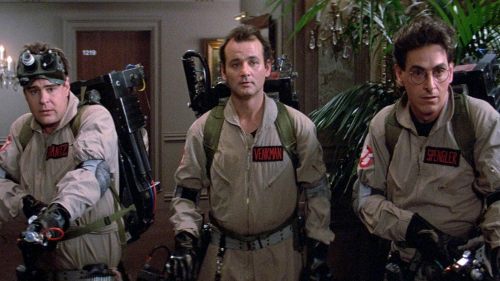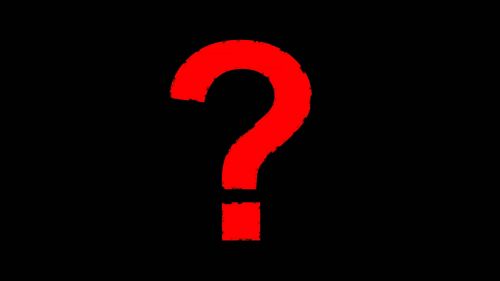Collins’ Crypt: I Am Thankful For 1979’s Horror Output
I keep seeing people post things that they are thankful for, which makes sense because it's Thanksgiving and they want their loved ones to be swayed into buying them something good on Black Friday. But I'm a superstitious type, so I suspect if I were to say something like "I am thankful for the continued survival of the noble elephant", elephants will become extinct in the next week or so. However, outside of a bout of amnesia there's something that can't be taken away from me: the past, and with that in mind I'd like to say how thankful I am for 1979's horror output, as it capped off what may very well be the best ever decade for the genre with a bunch of films that have become favorites over the years, not to mention instrumental in one way or another.
It's something I never really thought about until Scream Factory announced that they'd be releasing John Badham's Dracula and John Frankenheimer's Prophecy today, as both are indeed 1979 films. Part of my prep for an article about an older film is looking up its box office fortunes, and scanning over that year's list I noticed how many other genre films had done quite well at the time (these both flopped, alas), not to mention all of the independent/foreign films that for obvious reasons wouldn't be at the tops of those charts under any circumstances. When I think about my ideal years for the genre that decade, 1974 (Texas Chain Saw, Black Christmas) and 1978 (Halloween, Dawn of the Dead) usually come to mind first, but 1979 should be in the running too.
Indeed, if we're talking specifically about Dracula, 1979 is the best year for the character since 1897, as there were three major films about the vampire legend released in that span, though only Badham's film is the official one (the others were the comedic Love At First Bite and the remake of the unauthorized Nosferatu). Frank Langella reprised his role as the Count from the 1977 revival of the 1924 stage adaptation (which was in turn adapted as the Bela Lugosi/Tod Browning film), portraying a more romantic version of the character and omitting the fangs and bloodshed that had become such a trademark of the then more recent Hammer series. There were some changes to the novel as well; Mina and Lucy essentially switch roles, and the setting is updated to 1913 or so - still a period piece, just not THAT period.

Every change was for the better, as far as I'm concerned - it remains my favorite version of the story, and I was ecstatic to learn that Scream Factory would not only be putting it out, but offering both versions of the film. Nothing was cut or changed, content-wise - but director Badham (who wanted to shoot it in black & white) desaturated the film for most of its home video releases; the original theatrical coloring has been unavailable since the early '80s (when it was cropped for TV anyway). Knowing some people prefer it Badham's way, SF simply made it a two disc set, which will also allow newcomers to compare them to see which way they like. But with muted color or not, it's still the ideal take if you ask me: Langella is terrific, the production design is pitch-perfect, presenting the gothic look and feel of the older films with a (then) modern blockbuster budget, and John Williams' score is flat out gorgeous. Also, Donald Pleasence steals the film away from everyone else (including Laurence Olivier!) as Dr. Seward, who eats more than Brad Pitt in Ocean's 11.
Then there's Prophecy, which is more of an "acquired taste" kind of movie than one I can just go around championing to normal folks. Indeed, it took me a second viewing to warm up to its kooky charms, but I'm glad I gave it that chance as my time for such things is ever decreasing. After the success of Jaws, we saw lots of similar "animal vs man" movies that were going after the same lucrative box office fortunes, of which exactly none of them measured up (the closest? Er, Jaws 2, at about a third of the original's gross). But by 1979, all of the good animals had been taken, which means that folks like John Frankenheimer had to use leftovers and spruce them up somehow, as William Girdler already got "bear" checked off the master list with his (very blatant) Jaws ripoff Grizzly. Prophecy's villain Katahdin is basically a grizzly bear, but contamination from a local paper mill has turned it (and other wildlife) into a mutant, putting this more in traditional monster movie territory than the others of the era.
It takes a bit to get going, but when it does it kind of becomes a low-key version of one of my favorite types of horror: the "group of people who don't like each other have to band together to a fight a common enemy" plot. We have the "Opees" (original people) led by Armand Assante, who don't want anyone on their land, we have the assholes from the paper mill (owned by Richard Dysart!) who are trying to cover things up, and we have our hero, Dr. Verne (Robert Foxworth) who is there to write a report for the EPA (and brings his wife Talia Shire along for the ride). Katahdin, naturally, chooses no sides and wants to kill them all, so they gotta work together to survive - it's actually kind of a nice moment when Dysart's character admits he was wrong about Assante. But again, it's a bit slow, so it's understandable why the film didn't perform all that well, especially when it was released only a few weeks after Alien and audiences were getting their monster itch scratched far more effectively.

Curiously, Alien wasn't even the year's highest grossing genre film - The Amityville Horror, of all things, managed to outgross it. I'm not sure why exactly audiences kept flocking to this not-particularly-great haunted house movie, but I suspect it was leftover Exorcist/Omen appreciation that had people excited about supernatural horror over the other brands. I actually prefer the second film (subtitled The Possession), but in the spirit of the piece I can be thankful for launching a franchise that has provided much amusement (some ironic, yes) over the years. Alien, however, remains my favorite of that particular series, which shouldn't be much of a surprise since it's the only one that truly functions as a horror film as opposed to an action/horror hybrid (though Alien 3 comes close). The "haunted house in space" sub-genre has yielded a number of good films over the years, such as Sunshine and the underrated Event Horizon, but Ridley Scott's sophomore film is still the one to beat, and imitating it continues to be a viable prospect for executives (Underwater, in theaters this January!).
The classics (or "classics") weren't just coming from the US, either - the very first Italian horror movie I ever saw was a 1979 film, in fact: Lucio Fulci's Zombie. I bought it on VHS shortly after I saw Dawn of the Dead for the first time (this would be around 1995), intrigued by the box art's claims that it was a sequel to that much loved film. As we know now, the films are unrelated and the "sequel" status of Fulci's is only due to some creative Italian distributors (Romero's Dawn was released as Zombi in Italy, so Fulci's later Zombie became "Zombi 2" for both the easy marketing potential as well as to avoid confusion), but once I got over that I found it to be an eye-opening (heh) experience, inspiring me to look into Fulci's other films, as well as Dario Argento, Mario AND Lamberto Bava, etc. Likewise, when I was just out of college (2003/4) and realized I hadn't seen nearly enough David Cronenberg films (at the time, The Fly and Dead Zone were about it, I think), I loaded up my Netflix (disc) queue with his others and discovered that 1979's The Brood was even better than those, and to this day I cite it as my personal favorite of his films.
It was also a great year for weirdo horror, most notably Phantasm, the fever dream sci-fi tinged tale of a young boy who discovers that the bodies of his recently deceased parents may have been taken by an otherworldly mortician. The first and best of a five film series, it's the sort of film that easily holds up to repeat viewings, partly because it's so damn strange that it doesn't totally "sink in" the way a standard slasher or monster movie might. But it's not the only puzzler of the year; both Don't Go Near The Park and The Dark have their fair share of "HUH?" moments, especially in the former as it switches gears several times over the course of its 80 or so minutes, starting with some cavemen 12,000 years in the past, flash-forwarding to the '60s where one of them (their cannibalistic ways keep them immortal - why not?) decides to have a child, and then checking in with that child until she turns 16, at which point - 25 or so minutes into the movie - it becomes entirely about her. And there are still wacky plot developments in store.

The Dark, on the other hand, is stranger in its behind the scenes info than on-screen, which is saying something since the finished product is still pretty odd. The film began life under the direction of Tobe Hooper, who as was often the case during this period was fired for clashing with the producers (he did Salem's Lot the same year, so I'm guessing he ultimately made the right choices here). But he wasn't the only one replaced - the film's antagonist was as well, as the script (and early production) called for an abused, autistic child who escaped from the attic he had been confined to his entire life to serve as the villain. However, the success of Alien had the producers thinking they needed more sci-fi in their movie, and so the bad guy became some alien monster thing who shoots laser beams. Meanwhile, William Devane - who only signed on to the movie to work with Hooper - kind of wanders around on the outskirts of the narrative, playing a man whose daughter was killed by the monster and, rather than go vigilante on it, instead opts to just harass the homicide detective into finding his daughter's killer for him. It's more obscure than the others here, but definitely worth tracking down.
And of course, I have to mention my beloved Tourist Trap. The film came to my attention in 2005 when the House of Wax remake came along and I read somewhere that it was more of a Tourist Trap remake than one of its namesake. I had never heard of the film, but since I quite enjoyed the Wax update I tracked down a copy soon thereafter and was instantly smitten with its offbeat blend of slasher and telekinetic horror that was all the rage back then thanks to Carrie. The Pino Donaggio score is fantastic, the FX are largely impressive to this day, and it's also pretty fast paced for the "car breaks down in the middle of nowhere" sub-genre, as said breakdown actually occurs prior to the first scene, beginning on one of the guys heading to the garage (and getting killed shortly thereafter). In a year full of cherished faves, this might be my actual favorite of the lot.
This isn't even all of the films I'm thankful for that year - the likes of Nosferatu, Killer Nun, and When A Stranger Calls are all worthy of a place on my shelf. And as an American, even though I wasn't born yet, 1979 is the year we were blessed with Dawn of the Dead, as it premiered here that April. It's also the year Halloween actually became the phenomenon it was - it was released in 1978, but because of its region by region release, it wasn't until 1979 that most audiences (and even some notable critics) saw the film, helping to turn it into the cultural juggernaut it continues to be. It's a shame that Dracula and (to a lesser extent) Prophecy weren't as successful as some of these other genre releases that year, but that brings me to my final thanks - to the third party "boutique" labels like Scream Factory who continue to restore and present these films to modern audiences, giving them the same treatment as the blockbusters of their day have always enjoyed.



